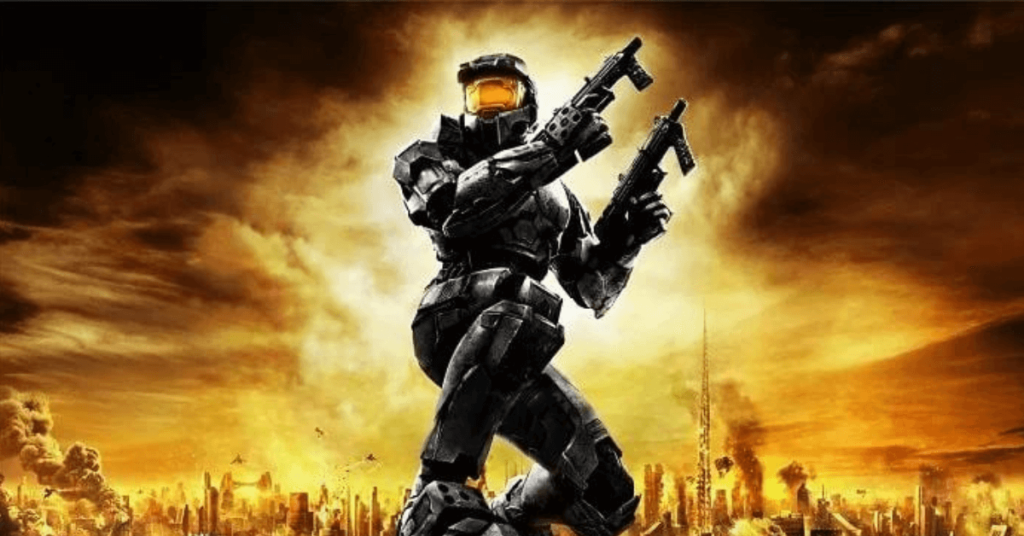Introduction halo (2003) game icons banners
The 2003 debut of Halo: Combat Evolved changed the first-person shooter genre and is more than just a game. The usage of gaming symbols and banners is among the most fascinating facets of Halo’s history. These graphic components are essential to the game’s identity and marketing plan since they draw players in and foster a devoted community.
What are the Halo (2003) Game Icons Banners?
In Halo (2003) game icons banners are graphic representations that are used in-game and during marketing in a variety of settings. The Master Chief’s helmet, the recognisable Halo ring, and other weapons and vehicles are examples of icons. In contrast, banners are more substantial visual components that are utilised in promotional items, loading displays, and menus.
The Significance of Halo (2003) Game Icons Banners
Icons and banners are not just decorative; they are powerful tools for branding and marketing. They help create a recognizable identity for the game, making it stand out in a crowded market. Moreover, these elements foster player engagement and community building by creating a sense of belonging and continuity.
A Look at Some of the Most Famous Halo (2003) Game Icons and Banners
One of the most iconic images from Halo is the Master Chief’s helmet. This single icon encapsulates the essence of the game – bravery, combat, and science fiction. Another significant banner is the Halo ring itself, representing the mysterious and expansive universe players explore.
Design Elements of Halo (2003) Game Icons and Banners
The design of Halo’s icons and banners is meticulously crafted to evoke the game’s themes. The visual style is a blend of futuristic and military aesthetics. Colors like green and metallic tones dominate, symbolizing the military aspect, while deep blues and purples hint at the vast, unknown cosmos.
The Evolution of Halo Game Icons and Banners Over the Years
Since 2003, the visual components of Halo have changed to match both player preferences and technological improvements. Technical constraints made early designs simpler, but as graphics technology advanced, so did the intricacy and detail of the icons and banners. These modifications have been informed by player feedback as well, guaranteeing that the designs are current and captivating.
How Halo (2003) Game Icons Banners Enhance Player Experience
Game icons and banners contribute significantly to the immersive storytelling of Halo. They are not just visual elements but extensions of the game’s narrative. For example, a banner featuring the Halo ring immediately connects players to the game’s lore, enhancing their overall experience.
Creating Memorable Game Icons and Banners: Lessons from Halo (2003)
One key lesson from Halo’s success is the importance of consistency in design. Keeping visual elements aligned with the game’s themes helps in creating a cohesive identity. Additionally, incorporating player feedback can lead to more engaging and beloved designs.
Community Contributions to Halo (2003) Game Icons and Banners
Fan-made content has always been actively produced by the Halo community. These contributions enhance the culture of the game, from personalised icons to banners used in forums and fan sites. The relationship between the game and its participants is further strengthened via official competitions and events that promote community involvement.
The Role of Game Icons and Banners in Esports and Competitive Gaming
In the realm of esports, game icons and banners are vital for branding and identity. Teams often use custom banners inspired by Halo’s designs to create a unique identity. This visual branding helps in building a team’s reputation and fanbase.
How to Design Your Own Game Icons and Banners Inspired by Halo (2003)
For those inspired by Halo’s designs, there are numerous tools available to create your own icons and banners. Software like Adobe Illustrator and Photoshop are great for beginners. Key tips include understanding the game’s themes, using consistent color schemes, and incorporating feedback from potential users.
Analyzing the Success of Halo (2003) Game Icons and Banners
The success of Halo’s visual elements can be attributed to strategic marketing and a deep understanding of the player base. By creating designs that resonate emotionally with players, Halo has managed to maintain a strong visual identity over the years.
Comparing Halo (2003) Game Icons and Banners to Other Games
When compared to other games, Halo’s icons and banners stand out for their unique blend of military and sci-fi aesthetics. While other games might focus on fantasy or realism, Halo’s designs carve out a niche that is instantly recognizable and memorable.
Future Trends in Game Icons and Banners
Looking ahead, new technologies like augmented reality (AR) and virtual reality (VR) will probably have an impact on the design of game icons and banners. These technologies have the ability to completely change the way that icons and banners are created and utilised by providing new methods to interact with visual elements.
Conclusion
More than just decorative components, Halo (2003) game icons banners are essential to the game’s feel and gameplay. For marketers and game creators alike, their effect, evolution, and design provide insightful lessons.


